Games PC MECHWARRIOR 2 User Manual
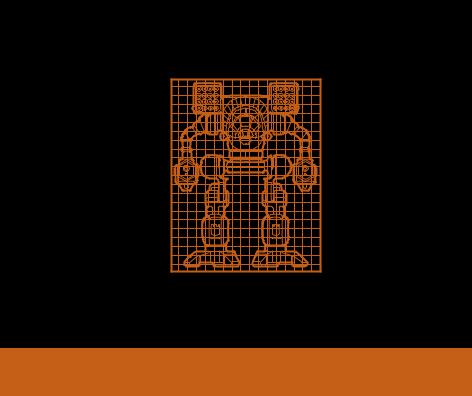
CODES AND PROCEDURES
OF THE WARRIOR CASTE

Therefore the youngest of them all stood up, And with a voice like amber wine she spoke: “Great sir, now all is clear and seeming well, Yet still there is but one remaining problem;
My children, sir, they as of yet unborn,
Shall never hear your words so pure and grand.” “You see”’ the great one spoke aloud, “It is
your humble kin for whom I write this book. It is the law, our honor bound in hide.”
—The Remembrance
Passage 156, Verse 4, Lines 24-32

PREFACE
Preface
This book outlines the codified rules of behavior all members of the Warrior Caste are expected to uphold. It is the very definition of what it means to be a MechWarrior. You must study it well, for ignorance of its contents is grounds for caste demotion.
Each passage represents centuries of testing and modification, trial and error. The protocol contained herein has descended from Kerensky’s own words. There are only two books that are older than this one and still being read, The Remembrance and one other. You are therefore expected to live and die by its instructions.
The Warrior Caste is above all others in the Clan. The Laborer, the Technician, the Merchant and the Scientist all look to you for guidance, for you are the most perfect of all perfection. The Warrior is the very top of culture. You are the teacher and the protector, the governor and the parent.
As a MechWarrior you will fight in the Touman for the glory of the Clans. There is no higher honor, no greater glory, than to enter combat outnumbered by the largest margin possible and emerge victorious.
Your tool in the field is the BattleMech. It is your mount. You will learn to pilot it. You will become part of it and it, you. The BattleMech is designed to translate your will into the actions of the machine. As a MechWarrior, your very thoughts equal your foe’s defeat.
Combat is your life. Fear not death. The honorable will find their end in the field. Honor is the lifeblood of the MechWarrior. Without honor the MechWarrior is worth less than the dust whence he came. There is no virtue above honor. Without honor there is not life.

Table Of Contents
TRIALS OF GRIEVANCE . . . . . . . . . . . . . . . . . . |
1 |
Instant Action . . . . . . . . . . . . . . . . . . . . . . |
1 |
• Scenario . . . . . . . . . . . . . . . . . . . . . . . . . . . |
1 |
• Friendly Clan/ Enemy Clan . . . . . . . . . . . . . . |
1 |
• ’Mech Lab . . . . . . . . . . . . . . . . . . . . . . . . . . |
2 |
• Star . . . . . . . . . . . . . . . . . . . . . . . . . . . . . . . |
2 |
NON-COMBAT PROTOCOL . . . . . . . . . . . . . . . . |
3 |
Registration . . . . . . . . . . . . . . . . . . . . . . . |
3 |
Cadet Training . . . . . . . . . . . . . . . . . . . . . . |
3 |
Clan Archive . . . . . . . . . . . . . . . . . . . . . . . |
4 |
Career Advancement . . . . . . . . . . . . . . . . . |
4 |
• Clan Trials of Position . . . . . . . . . . . . . . . . . |
5 |
• Ranking Structure . . . . . . . . . . . . . . . . . . . . |
5 |
• Hall of Honor . . . . . . . . . . . . . . . . . . . . . . . |
5 |
• Rules of Engagement . . . . . . . . . . . . . . . . . |
6 |
PRE-LAUNCH PROTOCOL . . . . . . . . . . . . . . . . . |
7 |
Mission Briefing . . . . . . . . . . . . . . . . . . . . |
7 |
• Mission Types . . . . . . . . . . . . . . . . . . . . . . . |
7 |
• Mission Objectives . . . . . . . . . . . . . . . . . . . |
7 |
• Situational Report . . . . . . . . . . . . . . . . . . . . |
8 |
BattleMech Selection . . . . . . . . . . . . . . . . . |
8 |
• ’Mech Types . . . . . . . . . . . . . . . . . . . . . . . . |
8 |
• BattleMech Components . . . . . . . . . . . . . . . |
12 |
• Balancing a ’Mech . . . . . . . . . . . . . . . . . . . |
14 |
Star Configuration . . . . . . . . . . . . . . . . . . . |
15 |
CONTENTS OF TABLE

TABLE OF CONTENTS
• Tactical Star Formations . . . . . . . . . . . . . . . |
16 |
Cockpit Controls . . . . . . . . . . . . . . . . . . . . |
17 |
Combat Variables . . . . . . . . . . . . . . . . . . . |
17 |
• Difficulty . . . . . . . . . . . . . . . . . . . . . . . . . . . |
17 |
• Audio . . . . . . . . . . . . . . . . . . . . . . . . . . . . . |
17 |
• Detail . . . . . . . . . . . . . . . . . . . . . . . . . . . . . |
18 |
• Altered Reality . . . . . . . . . . . . . . . . . . . . . . |
18 |
Launch . . . . . . . . . . . . . . . . . . . . . . . . . . . |
19 |
Debriefing . . . . . . . . . . . . . . . . . . . . . . . . . |
19 |
COMBAT PROTOCOL . . . . . . . . . . . . . . . . . . . . |
20 |
Basic Piloting . . . . . . . . . . . . . . . . . . . . . . |
20 |
• Heat Management . . . . . . . . . . . . . . . . . . . . |
20 |
• Neural-Impulse Control . . . . . . . . . . . . . . . |
21 |
• Throttle . . . . . . . . . . . . . . . . . . . . . . . . . . . . |
21 |
• Steering . . . . . . . . . . . . . . . . . . . . . . . . . . . |
22 |
• Torso Twist . . . . . . . . . . . . . . . . . . . . . . . . . |
22 |
• Pilot Eye Control . . . . . . . . . . . . . . . . . . . . . |
22 |
• External Tracking Camera (XTC) . . . . . . . . . |
22 |
• Satellite Uplink . . . . . . . . . . . . . . . . . . . . . . |
23 |
• Low-Light Amplification . . . . . . . . . . . . . . |
23 |
Heads-Up Display Systems (HUD) . . . . . . . . |
23 |
Battle Parameters . . . . . . . . . . . . . . . . . . . |
28 |
• Abort Mission . . . . . . . . . . . . . . . . . . . . . . |
28 |
• Device Calibration . . . . . . . . . . . . . . . . . . . |
28 |
• Audio Control . . . . . . . . . . . . . . . . . . . . . . |
28 |
• Performance Settings . . . . . . . . . . . . . . . . |
28 |
• Deserting the Battlefield (Flee to DOS) . . . |
29 |
Navigation . . . . . . . . . . . . . . . . . . . . . . . . |
29 |
• NAV Points . . . . . . . . . . . . . . . . . . . . . . . . . |
29 |
• Auto-Pilot . . . . . . . . . . . . . . . . . . . . . . . . . . |
29 |
Targeting . . . . . . . . . . . . . . . . . . . . . . . . . |
30 |
• Targeting Info and Ranges . . . . . . . . . . . . . |
30 |
• Target View . . . . . . . . . . . . . . . . . . . . . . . . . |
30 |
• Inspection . . . . . . . . . . . . . . . . . . . . . . . . . . |
31 |

Weaponry . . . . . . . . . . . . . . . . . . . . . . . . . |
31 |
• Weapons System Breakdown . . . . . . . . . . |
31 |
• Grouping Weapons . . . . . . . . . . . . . . . . . . . |
33 |
• Chain-Fire vs. Group-Fire . . . . . . . . . . . . . . |
33 |
• Jettison Ammunition . . . . . . . . . . . . . . . . . |
34 |
Damage and Critical Hits . . . . . . . . . . . . . . |
34 |
Advanced Piloting . . . . . . . . . . . . . . . . . . . |
35 |
• Jump Jetting . . . . . . . . . . . . . . . . . . . . . . . . |
35 |
• MASC . . . . . . . . . . . . . . . . . . . . . . . . . . . . . |
36 |
• Manual Shutdown . . . . . . . . . . . . . . . . . . . . |
36 |
• Pilot Auto-Ejection . . . . . . . . . . . . . . . . . . . |
36 |
• Enhanced Imaging . . . . . . . . . . . . . . . . . . . |
36 |
• Commanding Starmates . . . . . . . . . . . . . . . |
37 |
Environmental Conditions . . . . . . . . . . . . . . |
38 |
APPENDICES . . . . . . . . . . . . . . . . . . . . . . . . . |
40 |
Appendix A — Default Control Configuration |
|
Systems . . . . . . . . . . . . . . . . . . . . . . . . . . . |
40 |
Appendix B — Procedures for Customizing |
|
a BattleMech . . . . . . . . . . . . . . . . . . . . . . . . |
44 |
Appendix C — Weapons Systems . . . . . . . . . . |
49 |
Appendix D — Diagrams of the BattleMechs |
|
(Primary Configurations) . . . . . . . . . . . . . . |
53 |
Appendix E — Glossary . . . . . . . . . . . . . . . . . . |
68 |
Appendix F — NetMech for MS-DOS . . . . . . . |
70 |
CREDITS . . . . . . . . . . . . . . . . . . . . . . . . . . . . |
79 |
CONTENTS OF TABLE
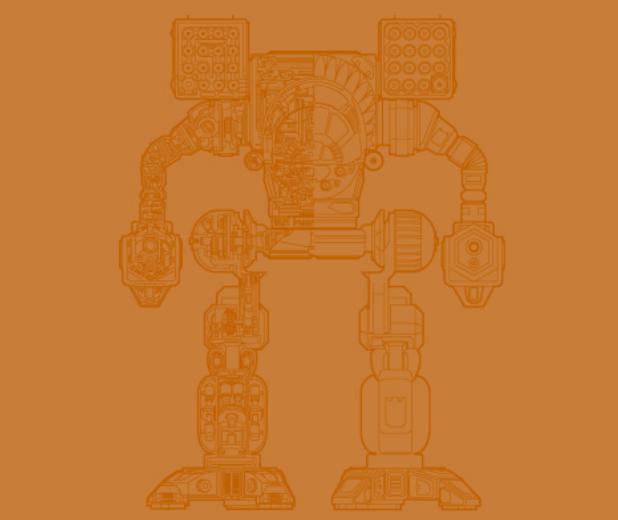

Trials of Grievance
Instant Action
Trials of Grievance can be called by MechWarriors to resolve conflicts against other warriors who have displayed dishonorable behavior. Trial of Grievance protocol requires MechWarriors to report for instant action upon being called to a Trial. The opposing warrior must accept this challenge for no other reason than to defend his honor. Clan members have been known to call Trials of Grievance against other warriors simply out of envy of another warrior’s performance or Clan ranking. Trials can be fought regardless of a MechWarrior’s current Clan rank since they neither progress nor hinder a BattleMech pilot’s advancement.
To engage in immediate battle, a MechWarrior need only accept the conditions of the scenario and give the order to LAUNCH.
Scenario
A MechWarrior calling a Trial of Grievance has the right to select the battlefield upon which he wishes to engage in battle. A MechWarrior need only select the planet of choice to determine the atmospheric conditions and terrain characteristics that are to affect the imminent engagement.
Friendly Clan/Enemy Clan
J ’Mech Deployment
MechWarriors can choose to lead a Star of up to three BattleMechs to a Trial of Grievance. However, employing excessive tonnage or deploying more ’Mechs than the opposing Clan has committed to defies Trial of Grievance protocol. The Keshik advises that MechWarriors take caution in the selection of BattleMech technology – unfair or wasteful deployment of Friendly and Enemy technology will not be tolerated.
GRIEVANCE OF TRIALS
1
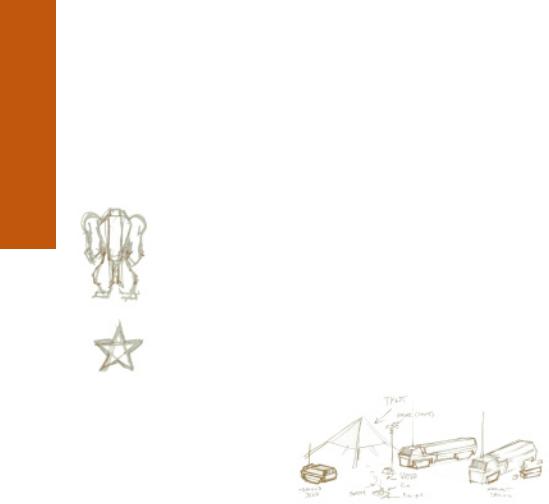
TRIALS OF GRIEVANCE
2
J Star Formation
A commander of a Star can select tactical Star formations prior to launch. By determining the general starmate positions from the Trial of Grievance display, a MechWarrior can issue an immediate Star formation order. Refer to “Tactical Star Formations” in the PreLaunch Protocol section.
J Clan Affiliation
Before launching on a Trial of Grievance, a MechWarrior must identify his Clan affiliation by displaying his Clan symbol under Friendly Star. Then he must confirm the Clan that he is calling to a Trial of Grievance by identifying the Enemy Clan symbol: Jade Falcon, Wolf, Ghost Bear, Nova Cat, Steel Viper or Smoke Jaguar.
’Mech Lab
The ’Mech Design Lab allows commanders of a Star to view the ’Mech technology they will be leading into battle. It also allows experienced MechWarriors to deploy customized BattleMech designs into combat. Commanders can access the ’Mech Lab Holoprojector to select different BattleMechs for themselves or to assign to their starmates. Refer to
Appendix B – Procedures for Customizing a BattleMech.
Star
MechWarriors engaging in Trials of Grievance can ready themselves for battle by reassigning the positions of the current ’Mechs in their Star unit to the three different points in a Star configuration. Upon issuing the STAR command to activate the Star Configuration Holoprojector, MechWarriors can review the Star positions of each of the ’Mech they will be leading into the Trial of Grievance. Refer to “Star Configuration” in the PreLaunch Protocol section.

Non-Combat Protocol
Registration
Upon entering the CLAN HALL, all pilots within a sibling company are required to register their pilot names on the sibko roster. Upon activating the REGISTRATION orb, a MechWarrior’s rank and vital statistics are also recorded in order to complete the required pilot sign-in.
Cadet Training
It is recommended that all cadets undergo rigorous training drills prior to solo piloting on advanced ’Mech combat missions. Cadets are advised to report to CADET TRAINING immediately following registration. Once inside the Training Quarters, cadets should review the standard training missions and await instruction on NAV Computer training. Each drill brings green pilots one step closer to their first Trial of Position in which cadets will have the opportunity to battle for the rank of MechWarrior.
J NAV Computer
Designed to teach cadets to navigate by following a NAV sequence while mastering the basic movement controls of a ’Mech.
J ’Mech Handling
Requires a pilot to practice advanced ’Mech throttle and steering techniques by running a ’Mech through a slalom.
J Weapons Usage
PROTOCOL COMBAT-NON
3
Hones cadet targeting skills using on-board weapons systems to hit various targets while challenging ’Mech maneuvering skills in “The Gauntlet.”
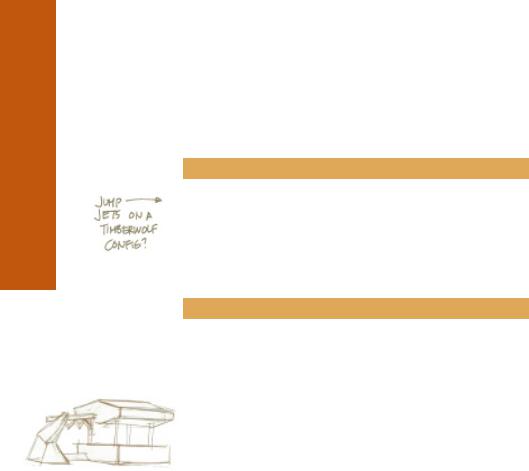
NON-COMBAT PROTOCOL
4
J Hunting
Takes training cadets on a hunting-and-killing expedition against a drone ’Mech.
J Inspection
Instructs cadets to inspect likely targets and investigate their contents while under fire.
J Trial of Position
Initiates a cadet in his first trial where he must hunt and destroy a veteran MechWarrior in one-on-one combat for a chance to earn the rank of MechWarrior.
Clan Archive
Registration gives MechWarriors unlimited access to the ARCHIVE HOLOPROJECTOR, the repository of all knowledge of the Clans. This immense research facility, once the place where the great IlKahns went to conduct studies on diverse subjects, holds exclusive Clan intelligence. IlKahns could access information on the historical combat techniques of the greatest Clan warriors or the technological differences of various BattleMech configurations. The Clan Archive offers classified information that could prove to better prepare a MechWarrior before launching combat missions against enemies of unknown worlds.
Career Advancement
A MechWarrior shall earn the right of advancement through his career as determined by the Keshik war council. The Keshik actively evaluates the performance of each combat engagement a MechWarrior accepts, recording victorious performance as well as that which is deemed dishonorable by the Clan. The Keshik duly rewards MechWarriors demonstrating exceptional piloting skills and a superior use of weaponry that adhere to Clan rules of engagement. The Keshik shall advise a MechWarrior of his eligibility for Clan advancement upon substantiation of a warrior’s merit.
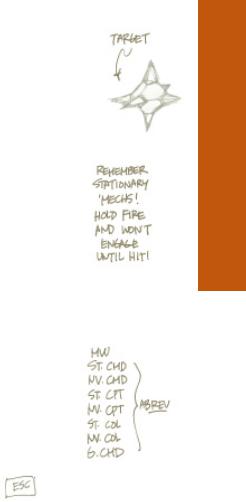
Clan Trials of Position
Upon thorough evaluation by the Keshik, a MechWarrior deemed worthy of advancement in rank will be notified of his right to participate in a Trial of Position. Clan protocol for such privileged battles requires a candidate to succeed in two distinct phases of a Trial of Position to be granted all ranks in question. The first phase requires the honorable defeat of all engaging ’Mech opponents. Once all opponents in Phase 1 are destroyed, the candidate will receive the trial moderator’s audio cue to continue. The audio signal will instruct the candidate to target and destroy a specified non-’Mech target – the Engagement Sphere – for Phase 2 officially to begin. If the candidate destroys the target before the cue, he will be forced to engage both Phase 1 and Phase 2 ’Mechs simultaneously. Upon completing Phase 1, the candidate can choose to retain the rank earned or continue the Trial for the right to earn a second rank. If the candidate accepts the second phase by destroying the Engagement Sphere within 15 seconds of the audio cue, he must proceed to defeat all Phase 2 opponents in order to succeed in the Trial of Position and earn the right to advance two Clan ranks. Should a candidate accept to continue, but fail to succeed in Phase 2, he must depart the Trial without earning a single rank.
Ranking Structure
A BattleMech pilot begins his career as a MechWarrior – the lowest-ranking member of the Warrior Caste with the right to command a ’Mech. A MechWarrior’s ultimate goal is to become Khan of his Clan. For this highest honor, a MechWarrior must excel throughout his career by achieving each possible rank and surpassing the highest levels of Clan honor before being invited to the last Trial of Position for Galaxy Commander and Khan.
1st Rank |
– |
MechWarrior |
6th Rank |
– |
Star Colonel |
2nd Rank |
– |
Star Commander |
7th Rank |
– |
Nova Colonel |
3rd Rank |
– |
Nova Commander |
8th Rank |
– |
Galaxy Commander |
4th Rank |
– |
Star Captain |
Top Rank |
– |
Khan |
5th Rank |
– |
Nova Captain |
|
|
|
Hall of Honor
PROTOCOL COMBAT-NON
5
The Hall of Honor reveres the pilots that have earned the overall highest honor in battle. These master warriors are archived by name, rank, honor and skill.

NON-COMBAT PROTOCOL
6
Rules of Engagement
We are bound by the rules and traditions of our great forefathers to uphold the honor and glory of the Clans. Clan warfare follows a strict code of honor – a glorious method that is designed to preserve life rather than destroy it. Only warriors adhering to such codes shall emerge victorious and worthy of the honor of being BattleMech pilots. MechWarriors shall strive for perfection in combat, perfection in the life of a warrior – all for the glory of the Clans.
JThe successful completion of the primary objectives of a mission shall bestow unto a MechWarrior the glory of a victorious battle.
JPerformance beyond the call of duty, qualified by the successful completion of any secondary or tertiary objectives a mission may call for, shall commend a MechWarrior with the highest honor of the Clan.
JBy fighting a war with fewer combatants, fewer lives are lost. Engaging in battle with the fewest ’Mechs possible, in the tradition of the Batchall, shall uphold a warrior with the highest honor of battle.
JDeploying lighter ’Mechs into combat than the Keshik deems necessary and preserving the technology of the Clans shall give a MechWarrior much honor through his career.
JEngaging in battle with more than one ’Mech against a sole MechWarrior holds the least honor; one-on-one combat holds the highest Clan honor.
JA MechWarrior commanding a Star is held responsible for his starmates. The loss of a starmate is deemed a dishonored act in the tradition of Clan warfare and shall be noted.
JEngaging in battle under the condition of Altered Reality, which causes a pilot to battle under the false belief of Invulnerability or Unlimited Ammo, shall deny a MechWarrior’s advancement through his career.
JKnowingly piloting a ’Mech whose Heat Tracking and Collision Damage system have been altered shall earn a MechWarrior great dishonor.
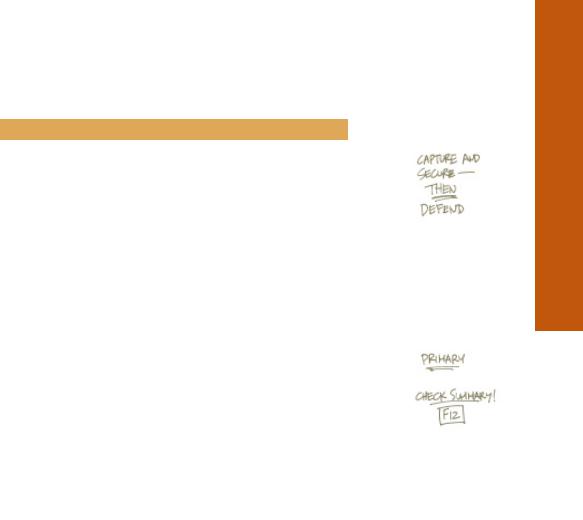
Pre-Launch Protocol
Mission Briefing
Upon reporting to the READY ROOM, each MechWarrior will receive a detailed MISSION BRIEFING in the form of an incoming coded message from the Keshik prior to launching a mission. The MISSION BRIEFING will describe the mission instructions, the objectives of the mission and a situational report of the ongoing conflict.
Mission Types
The Keshik’s mission instructions will follow combat procedures for one of the five mission types to which a MechWarrior can be commissioned to: (1) Strike (2) Defend (3) Escort (4) Combat Patrol, or (5) Reconnaissance. Each mission will call for the exceptional piloting of a BattleMech with the correct combination of stealth, speed and a decisive mix of weaponry and firepower that is tailored to the type of mission at hand. Refer to “BattleMech Selection” in this section for strategic advice on effective use of BattleMech resources.
Mission Objectives
Each combat mission is preceded by a mission briefing that details the objectives of the combat scenario a MechWarrior is about to embark on. Most missions consist of multiple objectives that create the focus of a mission, encompassing not only one or several Primary Objectives (which are the mandatory objectives of the mission), but also secondary and often tertiary objectives.
A BattleMech pilot’s precise understanding of the objectives of an assignment will prove beneficial to his career. The Primary Objectives of a mission convey the minimal accomplishments a MechWarrior is expected to achieve for the mission to be deemed a success. The completion of any secondary and/or tertiary objectives will warrant honor and glory above and beyond that of an honorable victory.
PROTOCOL LAUNCH-PRE
7

PRE-LAUNCH PROTOCOL |
8 |
In addition to the Primary Objectives of a mission, Mechwarriors are often required to destroy Targets of Opportunity that may appear during a mission. These targets consist of enemy objects which are not explicitly described in the mission briefing, but are nonetheless viable targets whose destruction will hamper the enemy’s war machine.
Various conflict scenarios also require a MechWarrior to meet an additional Return Condition before the mission can be declared officially over. This requires a MechWarrior to pilot his ’Mech to a pre-determined destination for a dropship departure or a ”dust-off” extraction. This condition promotes the preservation of technology, by allowing the Clans to confirm the integrity of the deployed BattleMech and lessening the risk of enemy-captured ’Mech technology.
Situational Report
MechWarriors are advised to review the situational report section of each mission briefing for a broader understanding of the state of affairs that may affect the battle scenario. The situational report expands on the mission objectives relating them to the global political unrest within the Universe.
BattleMech Selection
The Keshik will advise a MechWarrior on the suitable BattleMech technology for each assigned mission. However, a MechWarrior is entitled to review available Clan technology within applicable weight limitations set by the Keshik and select an alternate ’Mech according to a pilot’s preference.
’Mech Types
The modern BattleMech is perhaps the most complex machine ever produced. Incorporating complex methodologies to create war machines with different areas of superiority, BattleMech technology has succeeded in developing a reserve of BattleMech models with varying battle advantages.
By exploring the unique capabilities of each BattleMech, MechWarriors can evaluate a ’Mech’s strengths and weaknesses in the areas of size, weight, speed, firepower, maneuverability and stealth. This aids a MechWarrior in tailoring the deployment of a ’Mech to
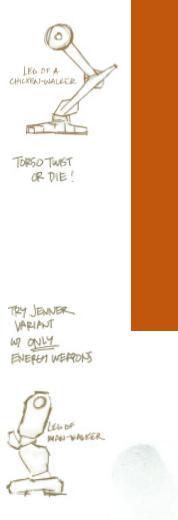
the specific objectives and environmental conditions of a mission. For example, a common deployment tactic is using a lightweight class ’Mech for reconnaissance missions since they are known for being highly efficient in expeditious inspections of enemy territories, yet not heavily armored.
Refer to Appendix D — Diagrams of the BattleMechs for configuration specifics on Clan technology.
J Firemoth
Trading armor for a top speed of 162 kph, the 20-ton Firemoth is the fastest Clan ’Mech in existence. Known for its ability to pack a powerful punch against ’Mechs up to 10-15 tons heavier, its light weight and notable speed makes it an excellent machine for recon patrol or scouting.
J Kitfox
At 30 tons and topping out at 100 kph, the Kitfox is clearly a fast combat machine. With a greater space for weaponry and equipment, the Kitfox offers a better spread of weapons and stronger armor, making it a popular ’Mech for training and a wise selection for newer pilots.
J Jenner II-C
At 35 tons, the lightweight Jenner II-C boasts additional missile packs and a top speed of 150 kph — a considerable improvement on the Inner Sphere Jenner. Recognized as a fast-moving missile boat, this Clan renovation is dangerously ammo-dependent and takes the risk of becoming an unfortunate observer.
J Nova
PROTOCOL LAUNCH-PRE
9
As the first ’Mech in the medium-weight line-up equipped with jump jet capability, the Nova is recognized for its agility in getting out of tight spots. At 50 tons and extensive firepower for its size, the Nova has proven effective in patrol or defense missions.
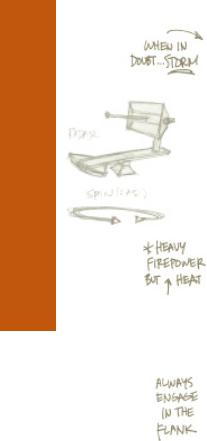
PRE-LAUNCH PROTOCOL
10
J Stormcrow
The Stormcrow offers 55 tons of solid combat power. With a potent spread of weapons, substantial speed and strong armor values, the Stormcrow is a wellbalanced all-around ’Mech capable of completing most combat objectives effectively.
J Mad Dog
A solid medium-weight ’Mech, the Mad Dog displays a solid mix of weapons for its 60 tons of fighting metal. Widely utilized for its long-range firepower, the Mad Dog is capable of giving a serious punch and is tough enough to take one.
J Hellbringer
The Hellbringer boasts a good spread of weapons across the board. At 65 tons, the Hellbringer is a fast, tough, all-around ’Mech that is exceptionally effectual in closerange battle and defensive missions.
J Rifleman II-C
This 65-ton Inner Sphere retrofit benefits from the addition of pulse lasers and jump jets. Though a tough contender, the Rifleman II-C is slow and often forces pilots to employ jump jets for escaping an attack rather than lateral movement. It is noted for its deftness in defense and combat patrol.
J Summoner
At 70 tons and equipped with jump jets, the primary configuration of the Summoner is one of the heavier ’Mechs with jump capability. The Summoner is popular for its invaluable combination of speed, weaponry and jump capacity.
J Timberwolf
This 75-ton machine is favored by Clan Wolf for its incredible versatility and ability to take a serious pounding. A popular reverse-joint ’Mech or “chicken-walker,” the Timberwolf is equipped with one of almost every type of weapon and is commonly used by Clan commanders.
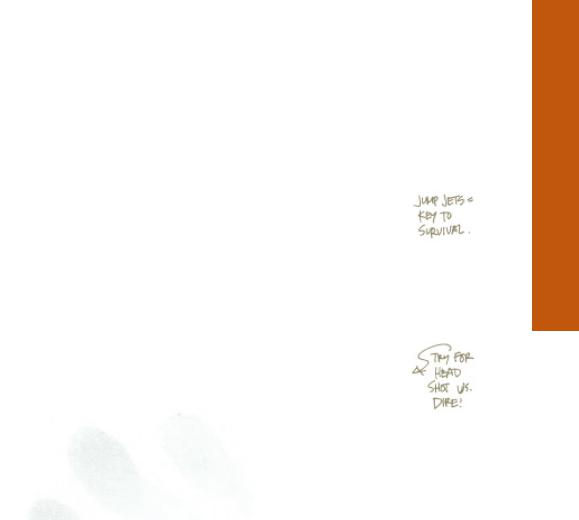
J Gargoyle
The Gargoyle packs its 80 tons with powerful firepower; however its weapons are highly ammo-intensive and demand a pilot’s constant gauging of depleted ammo. A superior close-range ’Mech, the Gargoyle is often employed for urban fighting and civil unrest.
J Warhammer II-C
This 80-ton heavy ’Mech retrofit is a popular deployment amongst the Clans. Wellknown for its durability and its even spread of weapons, the Warhammer II-C is capable of enduring extensive combat patrol and strike missions while inflicting a considerable amount of damage.
J Warhawk
This 85-ton assault ’Mech carries a 10-missile pack that can pepper an enemy from distances unreachable by most enemy opponents. With four particle projectile cannons that can be fired in one fell swoop, this ’Mech is highly regarded for its intense mix of firepower.
J Marauder II-C
Much like the Inner Sphere variant, the 85-ton Marauder II-C is equipped with a host of lasers and PPCs, making it a fierce close-range and defense opponent. With a maximum speed of 64.8 kph, the Marauder II-C is often highly regarded for its phenomenal endurance in combat.
J Dire Wolf
Weighing 100 tons, the Dire Wolf is the heaviest of the Clan ’Mechs. It carries a large amount of weaponry that allows it to take a major beating before an imminent breakdown. However, due to the frontal location of its cockpit and speed that’s hindered by its immense mass, the Dire Wolf can quickly become an easy target for faster ’Mechs.
PROTOCOL LAUNCH-PRE
11

PRE-LAUNCH PROTOCOL
12
BattleMech Components
The internal structure of a BattleMech is composed of eight sections: Head, Center Torso, Left and Right Torso, Left and Right Arms, and Left and Right Legs. Each of these sections serves as a designated area for carrying weapons, ammunition or additional equipment in a BattleMech. The following are the systems that comprise a BattleMech:
|
Head |
|
Left Torso |
|
Right Torso |
|
Center |
|
Left Arm |
Torso |
Right Arm |
Left Leg |
Right Left |
|
|
|
|
J Engines
BattleMechs can be equipped with a wide variety of engines to determine maximum land speed. There are two types of engines: standard or XL engines. The XL engines are retrofit standard engines with new and lighter shielding materials, greatly reducing overall engine weight at the cost of compactness. Although normal engine weight is halved, additional engine critical space must be allocated to both the Right and Left Torsos.
J Cockpit/Gyroscope
Every BattleMech includes a cockpit containing the MechWarrior’s control station, lifesupport system and electronic sensors. Damage to a ’Mech’s control components impacts its ability to move and jump. In addition to a cockpit, every BattleMech is equipped with a powerful gyroscope to keep it upright and able to move.
J Internal Structure
Internal structure is the backbone of the ’Mech. A BattleMech’s internal structure can be designed in using one of two Clan technologies: standard or Endo Steel. Made with zero-G manufacturing techniques that mix high-density steel with lower-density titanium and aluminum, Endo Steel is twice as strong per unit of weight as standard materials. However, strength is traded at an increase in overall bulk requiring more critical space in a ’Mech’s internal structure.
J Heat Sinks
Heat sinks supply a BattleMech with the ability to dissipate heat internally. Double heat sinks can cool a ’Mech much more efficiently with a heat-dissipation rate that is twice as fast as that of standard heat sinks. Although double sinks weigh the same as standard heat sinks, the double versions are considerably bulkier and take up extra space aboard a ’Mech. At one ton and two critical slots each, Torso-mounted double sinks

tend to limit space for weapons. Refer to “Heat Management, under “Basic Piloting” in the Combat Protocol section.
J Jump Jets
Most ’Mechs can be equipped with jump jets located in pods in the Leg and Torso areas to allow jump movement. Jump jets may only be mounted if there are sufficient critical slots in these areas. To gain desired jump capacity, a MechWarrior must evaluate the environmental conditions of the mission as well as the overall mass of the ’Mech being customized before determining the number of jump jets being added.
J Armor
A BattleMech’s armor provides the protective covering for its internal structure and critical components. There are two types of armor a pilot can choose to assign to a BattleMech: normal or Ferro-Fibrous armor. Ferro-Fibrous armor is an improved version of the ordinary BattleMech armor in that it greatly increases a ’Mech’s tensile strength. Although this advanced armor gives a ’Mech a greater armor factor for the same weight, it is bulkier than its equivalent weight of standard armor plating and requires more critical space in a ’Mech’s internal structure.
J Weapons Systems
Pilots can equip their ’Mechs with any mix of weapons their assigned base chassis will support. MechWarriors must weigh the advantages of using different energy, missile or ballistic weapons systems against the weight and space considerations of all possible combinations. Some weapons systems are more powerful at the expense of greater heat buildup, while other weapons cause less damage but have greater distance advantages. Refer to “Weaponry” in the Combat Protocol section.
J Ammunition
PROTOCOL LAUNCH-PRE
13
All weapons other than energy weapons (e.g., lasers) require a pre-allocated supply of ammunition that can be determined by each pilot. Ammo must also be allocated to critical slots within a ’Mech’s internal structure.
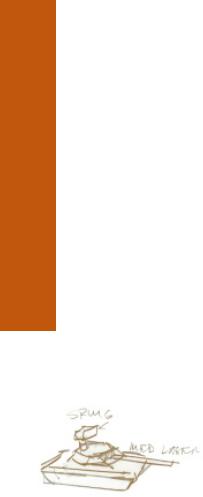
PRE-LAUNCH PROTOCOL
14
J Equipment
Every BattleMech is equipped with CASE (Cellular Ammunition Storage Equipment), a damage-control technology that mitigates the effects of internal ammunition explosions. When ammo explodes in a location with CASE, the force of the explosion is directed away from the ’Mech’s vital components, such as the cockpit or the engine.
A pilot can choose to equip his ’Mech with MASC, enabling the capability of short bursts of speed. Refer to “MASC” under “Advanced Piloting” in the Combat Protocol section.
J Criticals
All components housed within a BattleMech must be assigned to critical slots within a ’Mech’s internal structure. The number of available critical slots in each section of a ’Mech’s base chassis limits the mix of weapons and equipment with which any particular ’Mech can be configured. The construction of a BattleMech cannot be completed until each item has been assigned to the requisite number of critical slots.
Balancing a ’Mech
The ’MECH LAB allows BattleMech pilots to customize their ’Mechs with any legal mix of speed, armor, weaponry and equipment. The ’Mech Design Lab is accessible to experienced MechWarriors who opt for battle in customized BattleMechs or to pilots who wish to redesign their assigned ’Mechs.
’Mech construction consists of adding components to a standard chassis while maintaining a workable balance of BattleMech current mass and available critical space. Any design involves weighing the advantage of one capability over another. For example, a ’Mech can be constructed with extensive firepower, but the extra weight will make for a slow design. Refer to Appendix B — Procedures for Customizing a BattleMech.
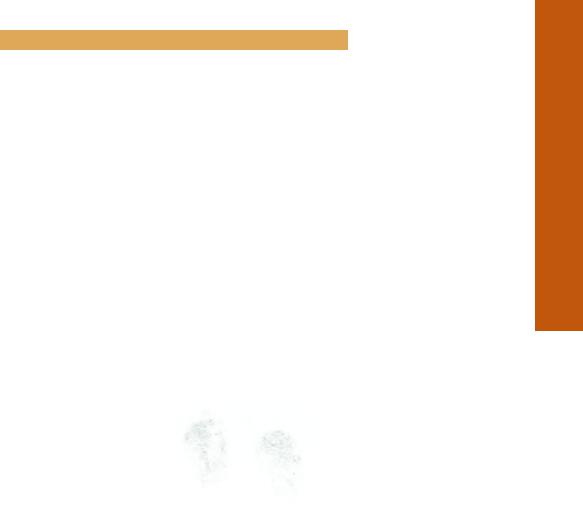
Star Configuration
The organization of ’Mechs on the battlefield is based on a squadron of ’Mechs – the Star. A Star can include up to three members, with one member being the designated leader and commander of the Star. After each mission briefing, a MechWarrior is advised to consult the STAR CONFIGURATION Holoprojector to review the recommended ’Mech deployment. Here a MechWarrior can access information on the total mass, the maximum mass per ’Mech and the maximum number of Star points the Keshik has assigned to the mission.
At this point, pilots can choose to add or delete starmates (up to the Keshik’s maximum deployment recommendation) and launch the mission with a larger or smaller Star. Once the size of the Star is determined, a Star commander can re-select a base chassis for himself or his starmate(s) – or customize the existing ’Mech configurations for the entire Star while staying within the limits set by the Keshik on the size of the Star and the maximum weight of each ’Mech.
MechWarriors can also reassign the positions of their Star unit’s BattleMechs to one of six different Star formations before each mission. All starmates will begin in formation awaiting orders at the beginning of each mission. Star formations can also be changed during a mission after launch has taken place in response to enemy activity. A strategic reformation of a Star could determine a Star unit’s victory or defeat.
Re-configuration of a Star is most effectively implemented once a MechWarrior has determined the direction from which impending enemy threats are detected. MechWarriors must be prepared to assign Star configurations in response to the assumed tactical stance of each mission (i.e., offensive, defensive or reconnaissance), as well as to the situational conditions of combat.
In order to easily identify starmates while in battle, a Star commander can reassign his starmates’ Callsigns by selecting the name above each starmate in the Star Configuration Holoprojector.
PROTOCOL LAUNCH-PRE
15
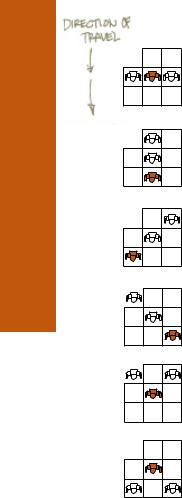
PRE-LAUNCH PROTOCOL
16
Tactical Star Formations
J Line Abreast
This side-by-side formation is useful in bringing an entire unit’s weapons to bear on enemies positioned directly in the frontline of travel. It promotes accuracy in usage of weapons systems without a need for complex ’Mech handling or navigation.
J Line Astern
This configuration assigns ’Mechs to a single-file formation recommended for strike missions heading straight into heavily concentrated enemy territories. The Line Astern formation is highly effective during enemy ambushes heading perpendicular to the Star, or if an enemy attack from the sides is highly probable.
J Eschelon Left
This diagonal Star formation leads its wingmen at a 45-degree left-angle. Useful when an enemy threat is positioned forward and to the left, this configuration ensures protection while allowing an open line of fire for efficient weapons usage.
J Eschelon Right
The alternate diagonal Star formation leads its wingmen forward and to the right at a 45-degree angle, providing a clear angle of fire while allowing protection of the flanks. This configuration is most effective when the enemy is believed to be approaching from a forward-right direction, employing wing men as guards.
J Wedge
This Star formation, regarded highly honorable, allows the Star commander to tactically divide an enemy formation with maximum backup. Such a Star configuration maneuver is dangerous, yet recommended in scenarios involving heavy reconnaissance and minimal defensive action.
J V-Formation
This all-purpose Star formation allows a Star commander to direct a Star from the rear. It offers a highly practiced technique for surrounding an enemy while providing maximum cover from the front to secure a Star commander’s position.
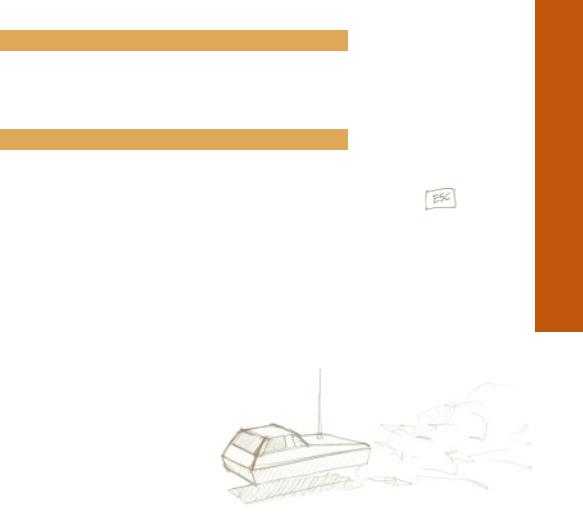
Cockpit Controls
This pre-launch preparation area allows a pilot to customize and configure his ’Mech’s peripheral control systems to his own specific preferences. The Keshik will supply a recommended configuration (default) for each pilot prior to launch. Refer to Appendix A — Default Control Configuration Systems.
Combat Variables
Difficulty
A MechWarrior’s reliance on a ’Mech’s targeting computer to detect weaknesses in the enemy affects the difficulty factor of each mission: Easy, Medium, or Hard. If a MechWarrior requires heavy assistance from the enhanced on-board system (Easy), he will have limited use of true piloting skills – thereby receiving less honor for the victory. A MechWarrior shall be revered with greater honor and glory for accepting missions with minimal use of the onboard targeting computer (Hard).
The difficulty of a mission is also greatly impacted by a pilot’s ability to manage his ’Mech’s heat. A pilot can choose to pilot with a ’Mech’s Heat Tracking system ON or OFF. However, relying on a ’Mech’s Heat Tracking computer, rather than the manual implementation of this vital system is dishonorable. A MechWarrior will receive no honor for a mission which is undertaken without the proper use of its Heat Tracking system.
Audio
MechWarriors can control the audio frequencies to be received while inside the cockpit before launching into a mission. A slider bar can be utilized to adjust the volume of all incoming audio, including on-board computer messages.
PROTOCOL LAUNCH-PRE
17
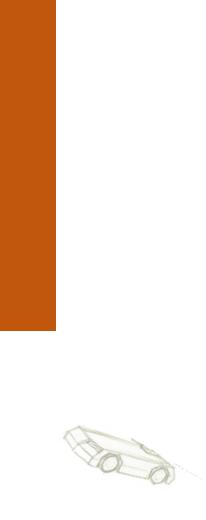
PRE-LAUNCH PROTOCOL
18
Detail
A ’Mech’s Detail control panel allows a MechWarrior to activate unique in-cockpit visual systems before a mission begins. MechWarriors wishing to increase (PC) system performance should de-activate these Detail functions (toggle to OFF or Low):
Object Textures |
(ON/OFF) |
Changes the textured surfaces on all man-made |
|
|
objects. |
Terrain Textures |
(ON/OFF) |
Affects the texturing of most natural formations in |
|
|
the environment. |
Display Detail |
(High/Low) |
Affects the level of detail of all objects within the |
|
|
world. |
Object Density |
(High/Low) |
Sets the density of objects within the world. |
Chunky Explosions |
(ON/OFF) |
Determines the amount of debris generated when |
|
|
objects are destroyed. |
Resolution |
|
Sets the resolution of the display: 320 x 200, 640 |
|
|
x 480, or 1024 x 768. (Some settings may not |
|
|
work with certain graphics cards.) |
Altered Reality
There have been many reports made by MechWarriors claiming the temporary invincibility of their BattleMechs while on the battlefield. Scientists have described this rare occurrence of altered reality as a delusional condition caused by a warrior’s deep state of euphoria.
Invulnerability |
OFF/ON (Dishonorable) |
Unlimited Ammo |
OFF/ON (Dishonorable) |
No Collision Damage |
OFF/ON (Dishonorable) |
IMPORTANT: Should a MechWarrior willingly experience an altered state of reality within his combat experiences, the Keshik will assuredly deny him the right to progress in his career.
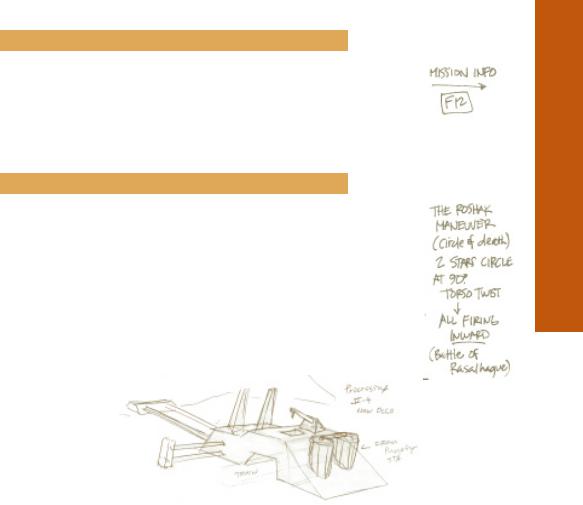
Launch
Upon accepting the conditions of a mission, a MechWarrior and his BattleMech are transported to the pre-determined battle site via dropship along with his starmates. Many times the dropship will hover on the planet where the engagement is to take place, while other times a hostile environment will require the dropship to return for a fast pickup once the mission has ended. All arrangements for dropship pick-up and drop-off are detailed in the Mission Briefing. A pilot can review this information anytime after LAUNCH by consulting the Objectives/Briefing Summary.
Debriefing
Each debriefing supplies MechWarriors with an in-depth report of their performance in battle. Each mission debriefing determines whether the previous engagement was a success or a failure, listing the mission statistics that communicate either the honorable or dishonorable feats of battle. Upon succeeding in a mission, the debriefing will describe the positive effects of completing the mission objectives as well as any universal issues related to a MechWarrior’s achievements. At this time, a MechWarrior will also receive any advances in Clan rank that may be merited.
If, however, a MechWarrior has failed a mission, he will be informed of the detrimental effects of his failure and offered the opportunity to regain his honor by re-attempting to perform the objectives of the failed mission. A MechWarrior can choose to accept or deny this offer, although denying will prohibit a MechWarrior’s ability to advance in rank and progress through his career.
PROTOCOL LAUNCH-PRE
19
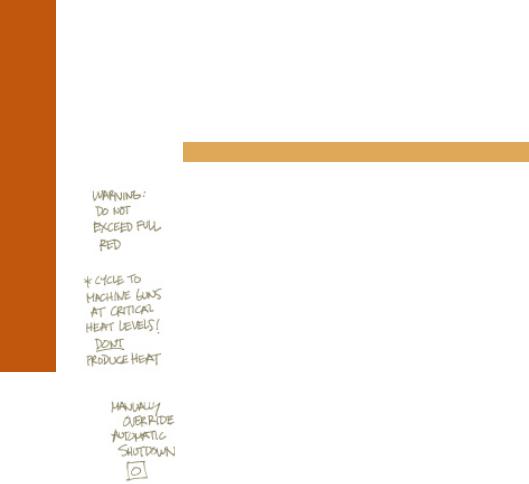
COMBAT PROTOCOL
20
Combat Protocol
Basic Piloting
Effective piloting involves the effective usage of basic in-cockpit systems and the careful analysis of the mission objectives and planetary environment. Mastering the essentials of piloting a BattleMech is the first step towards rapid career advancement.
Heat Management
Internal heat buildup is one of most severe problems a BattleMech will encounter during combat. A BattleMech builds up heat whenever it moves or fires its weapons or stands in an area of intense heat. With heat sinks being its single method of dissipating heat, a pilot’s overactivity (i.e., over-use of weapons) or outside air temperatures may produce more heat than a BattleMech can dissipate.
If its internal heat reaches critical heat levels, the ammunition or other systems that it carries may cause an internal thermal explosion. To avoid such catastrophic damage to vital Clan technology, BattleMechs are designed to automatically shut down when a ’Mech’s ammo threshold has exceeded maximum critical levels. This forces a BattleMech to remain inactive until heat is reduced below critical levels. BattleMech pilots are able to manually Override Automatic Shutdowns to get the benefit of their weapons systems and avoid shutdowns during critical situations. This is a strategic maneuver that must be utilized with great caution. However, a pilot should beware reaching full RED levels on his Heat Tracking Indicator once the automatic shutdown has been overridden. If the Indicator reaches a full-state of RED, the ’Mech is at risk of having a fatal internal ammo explosion due to excessive heat levels.
